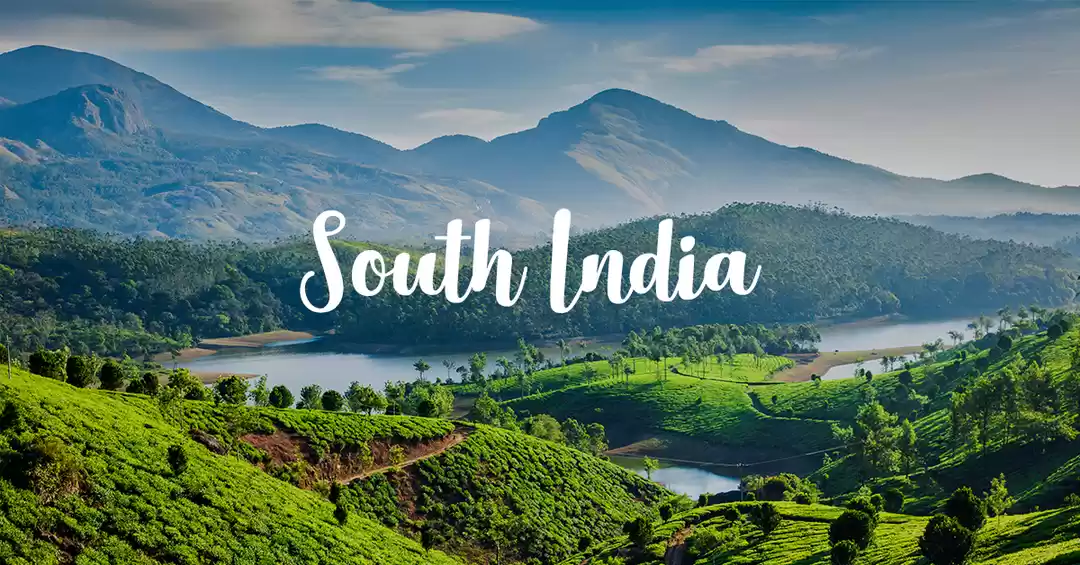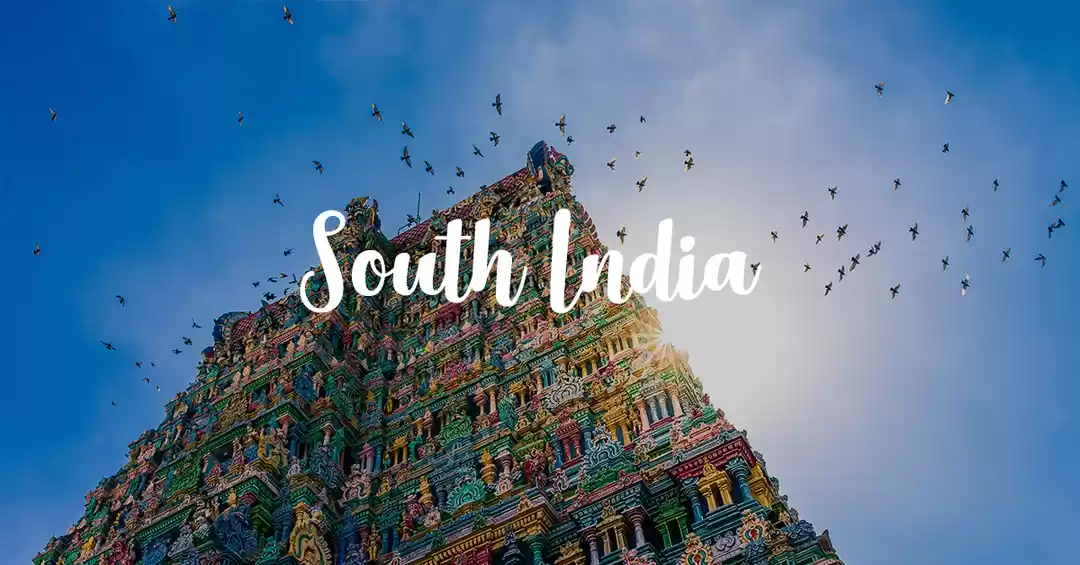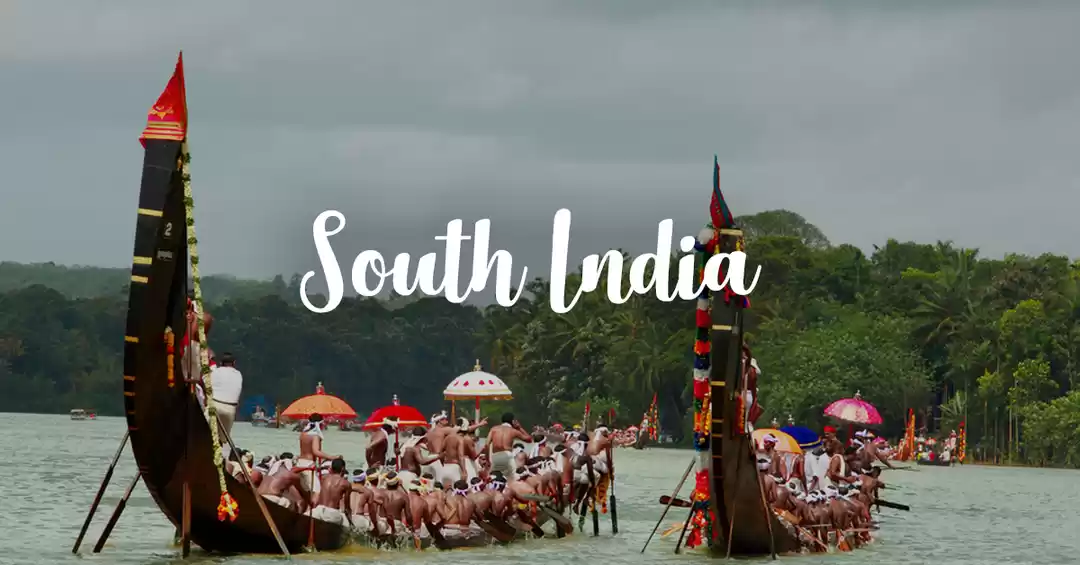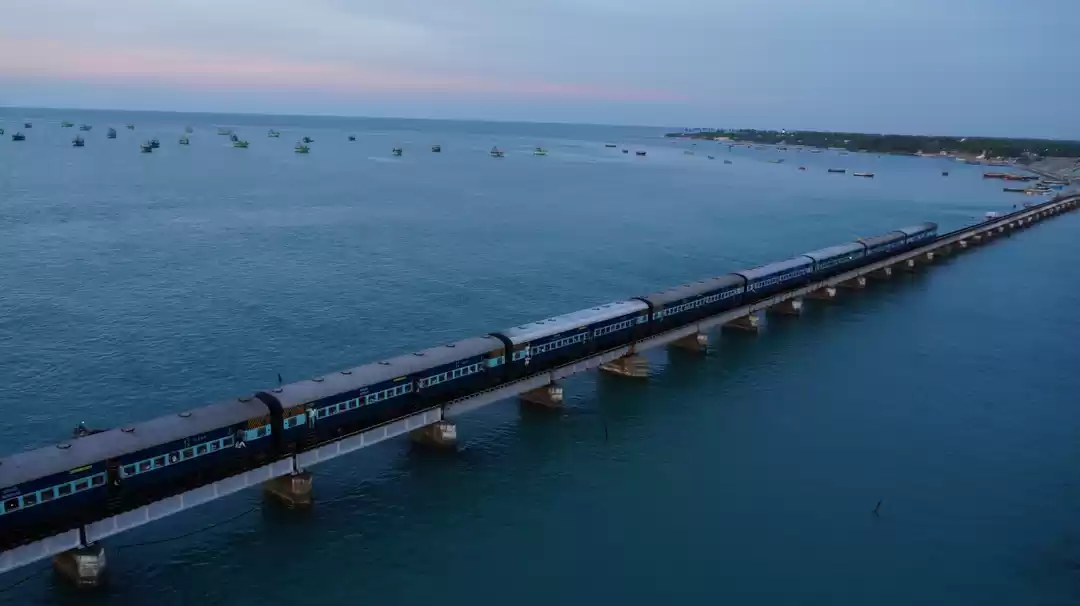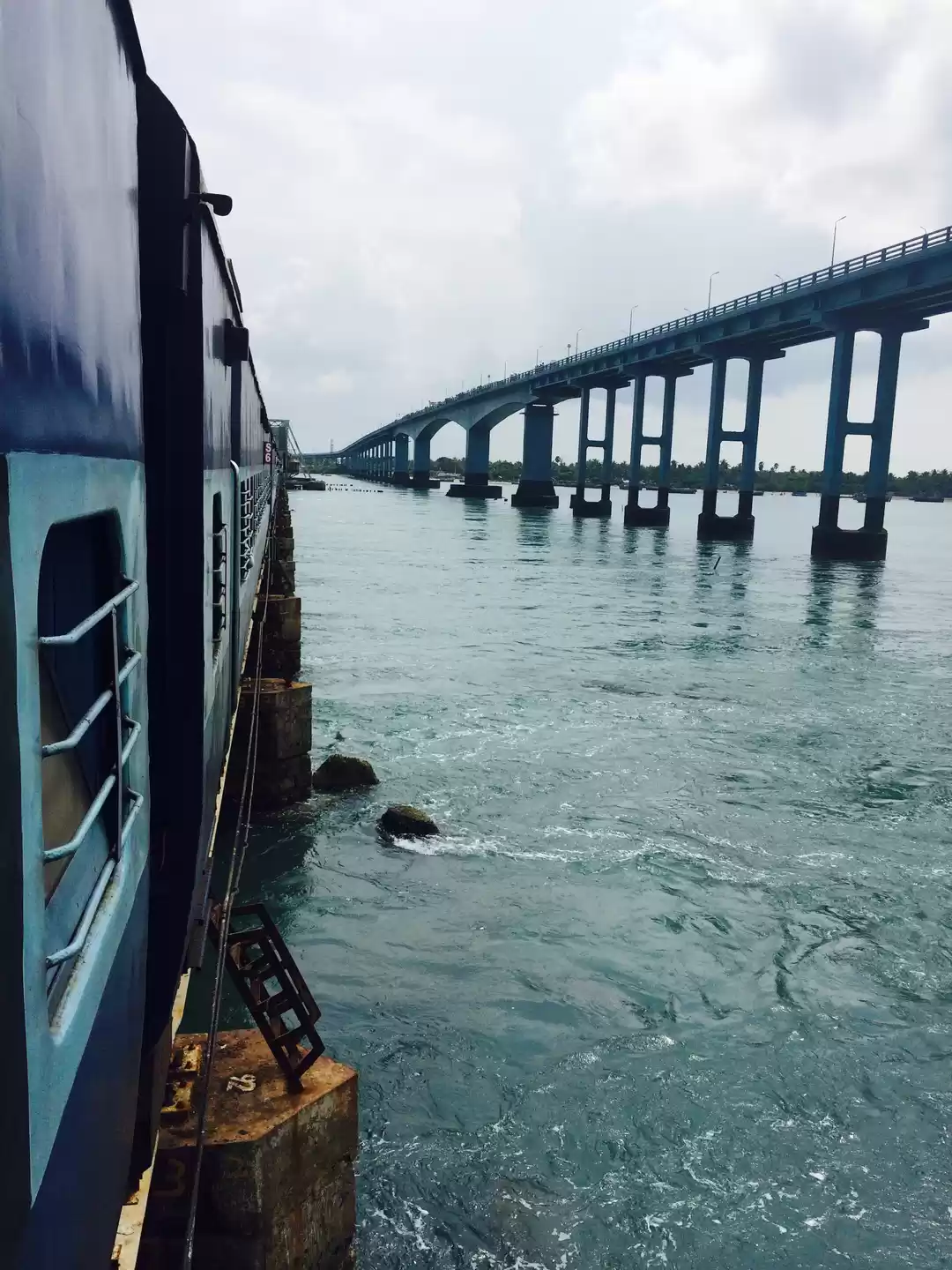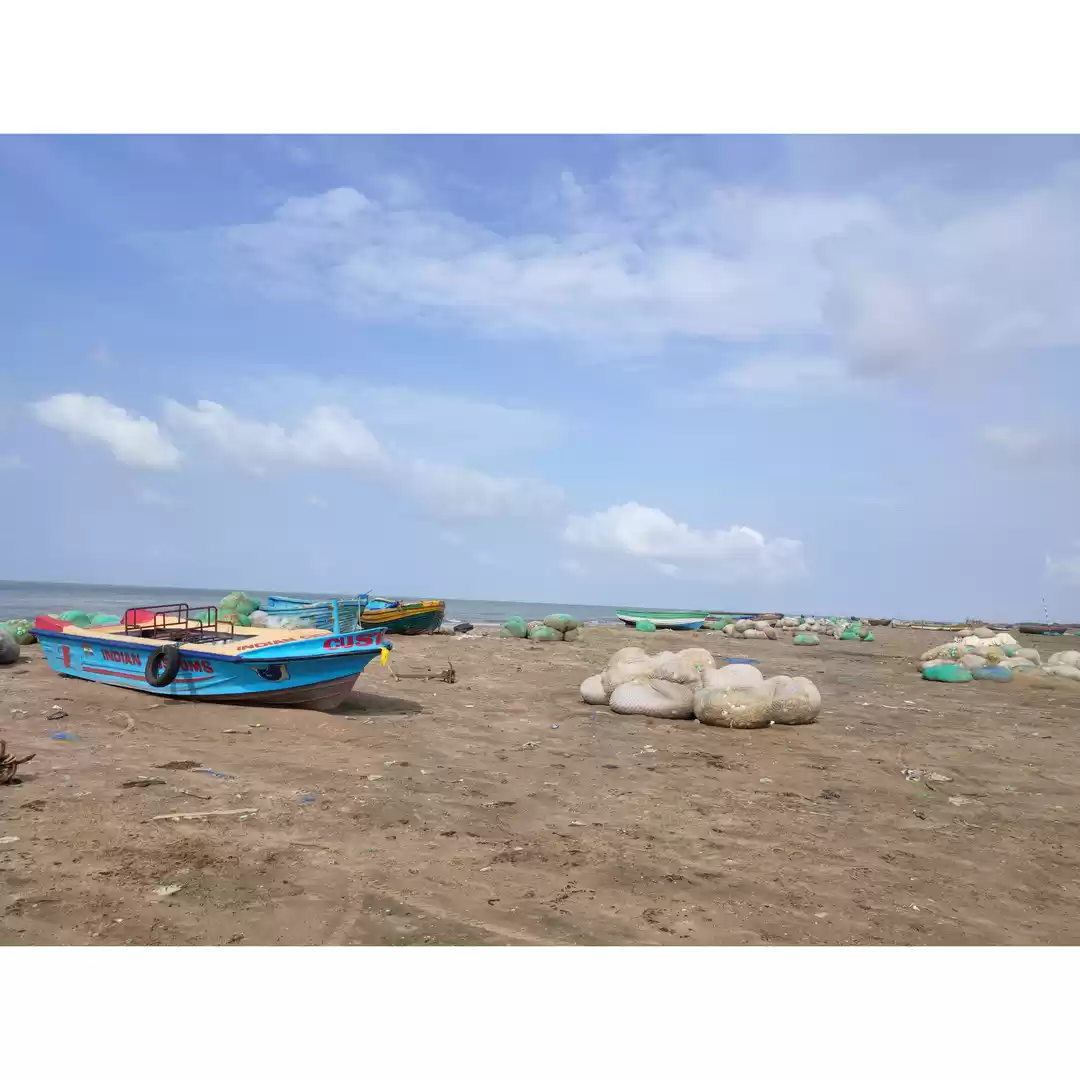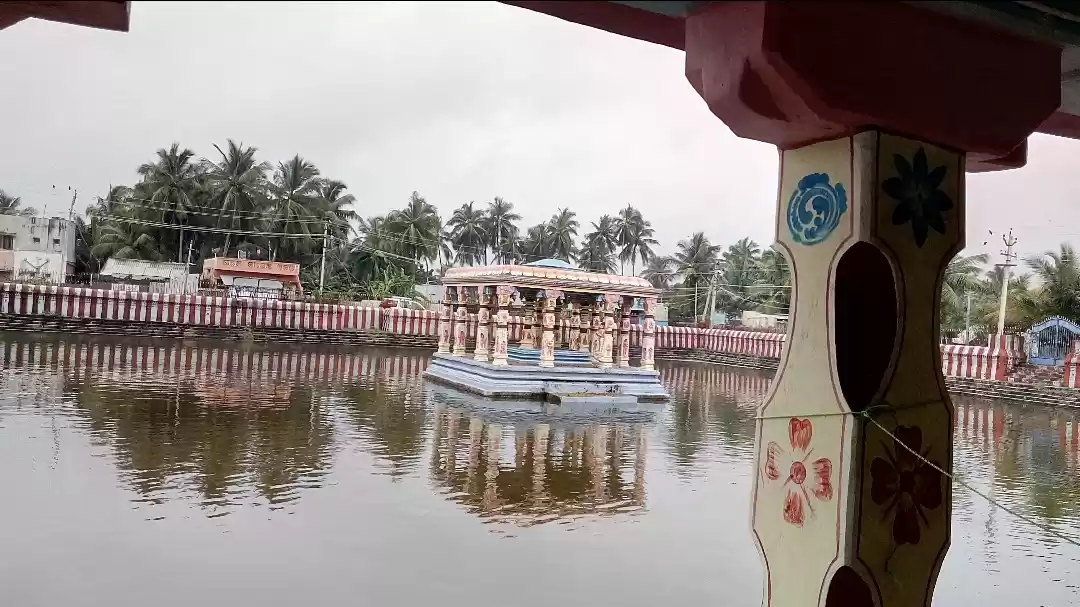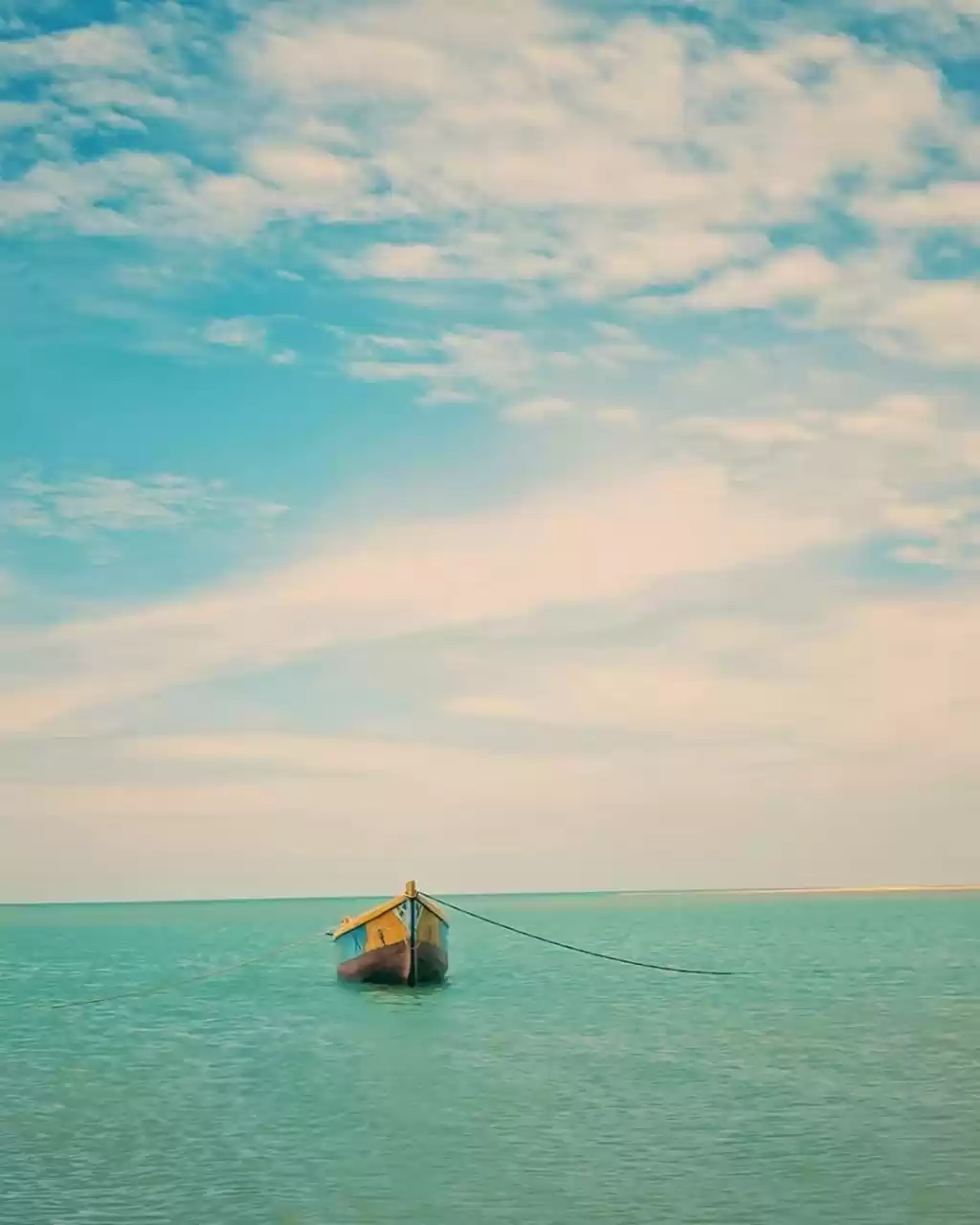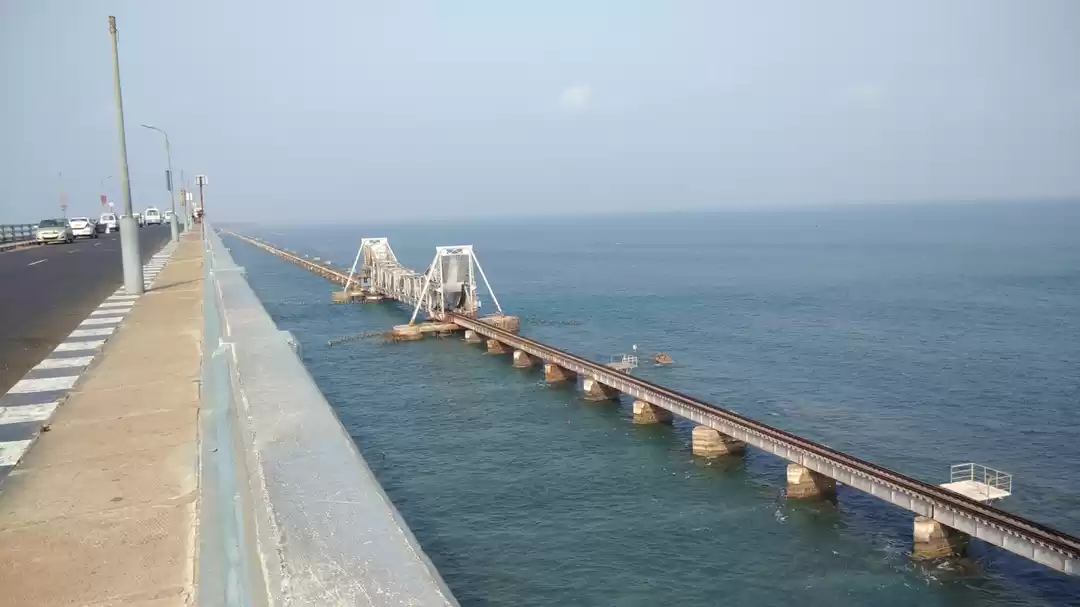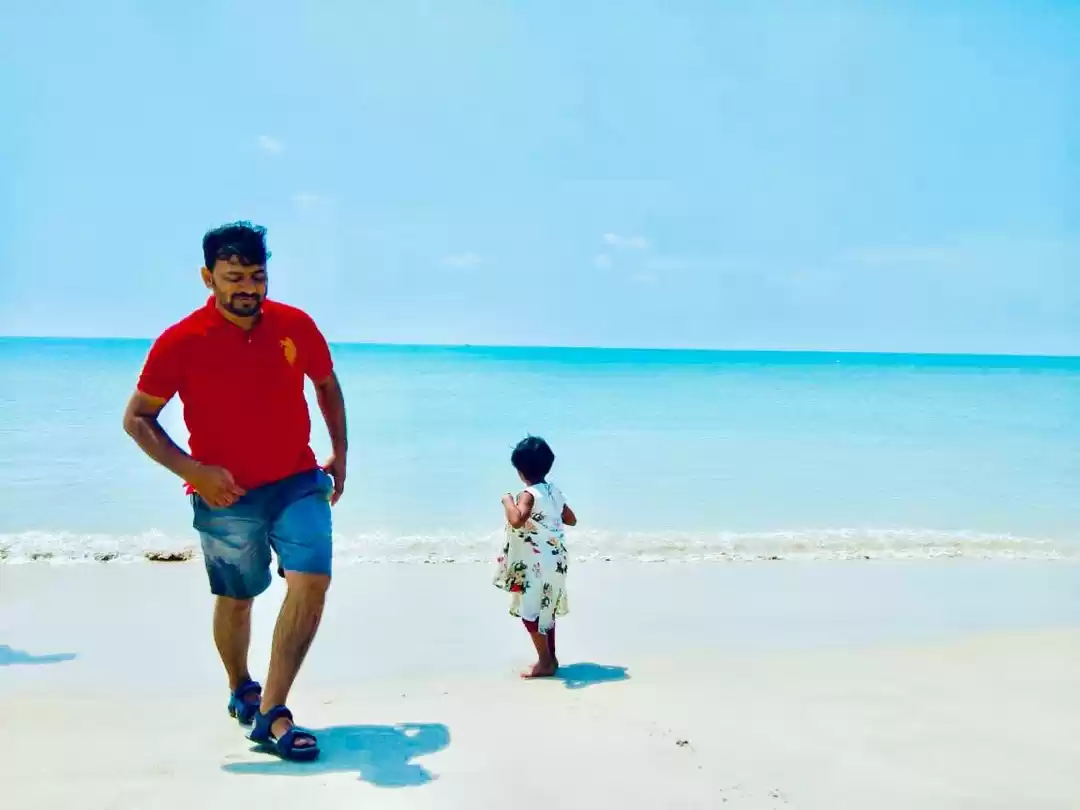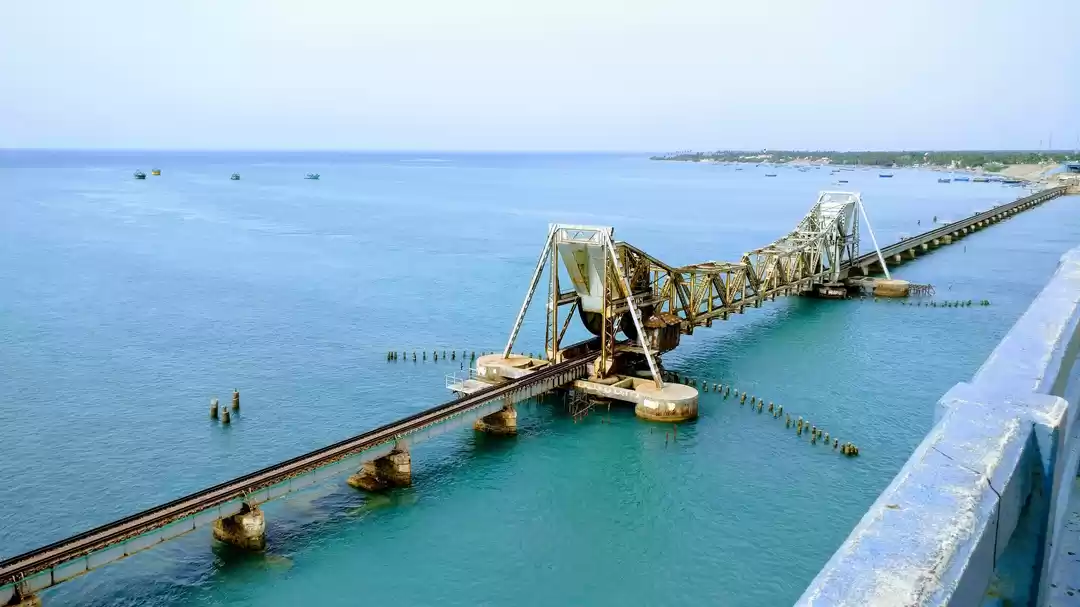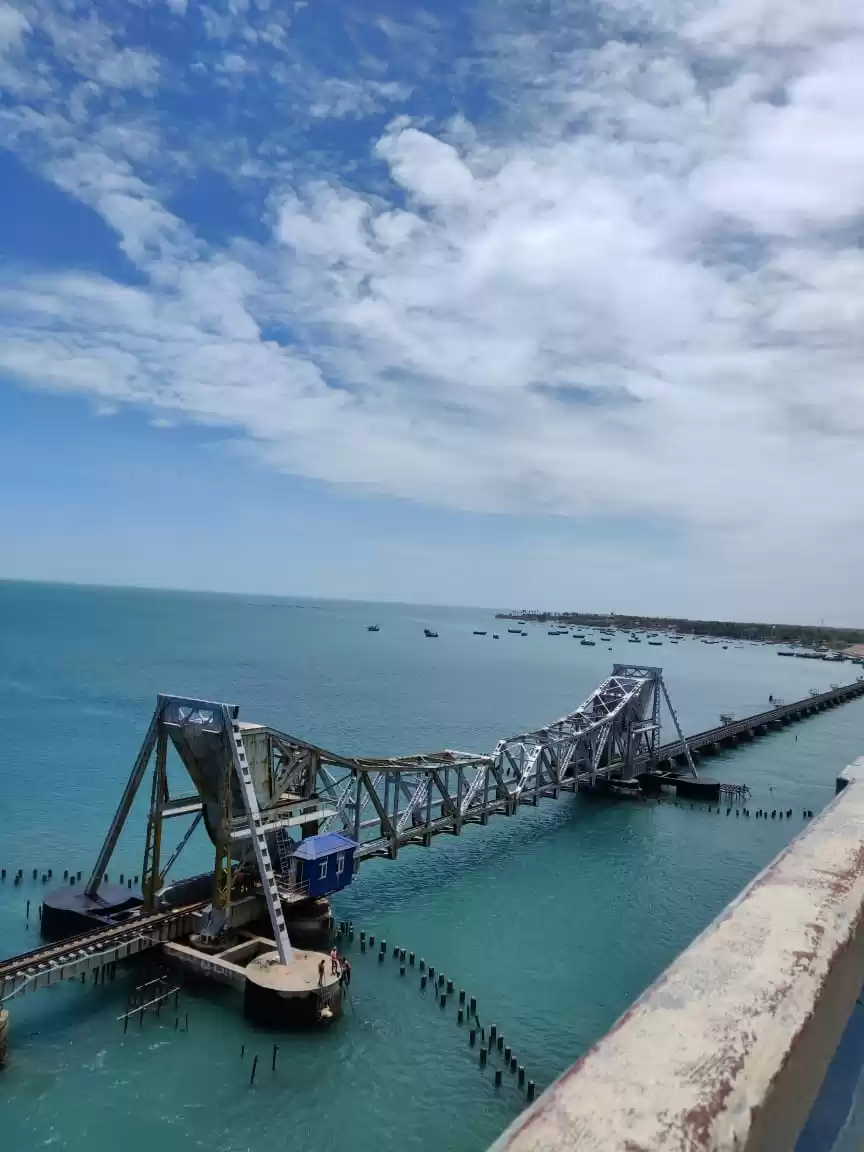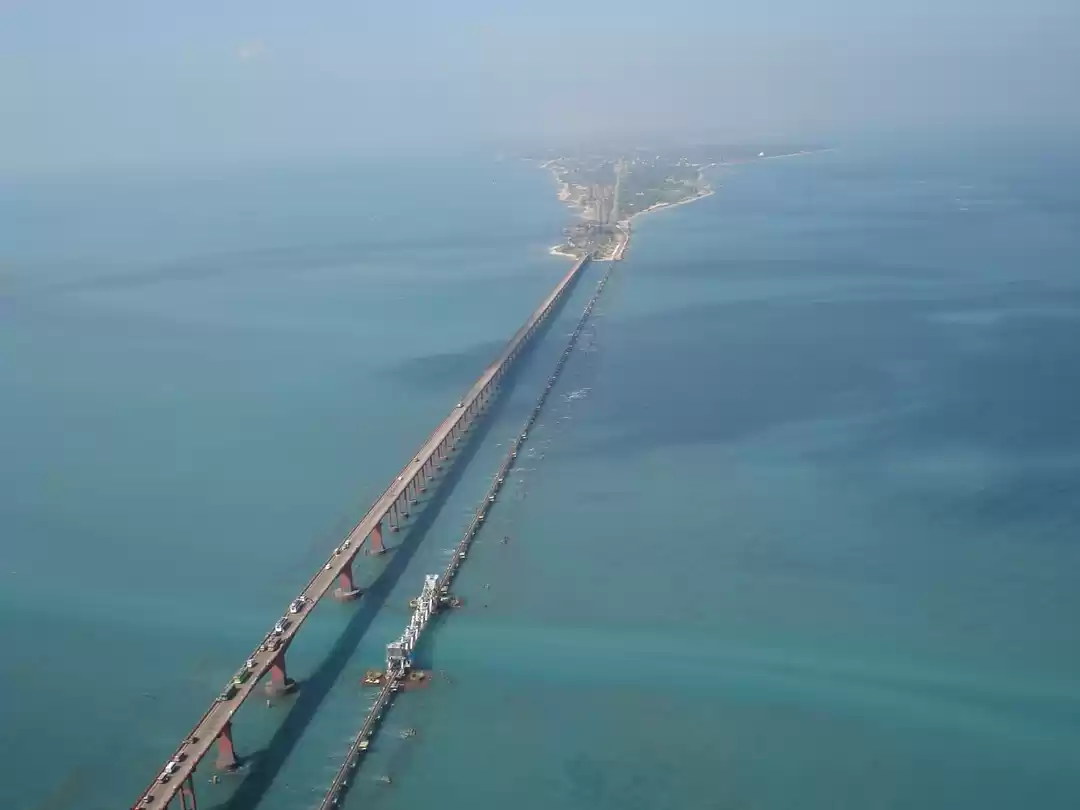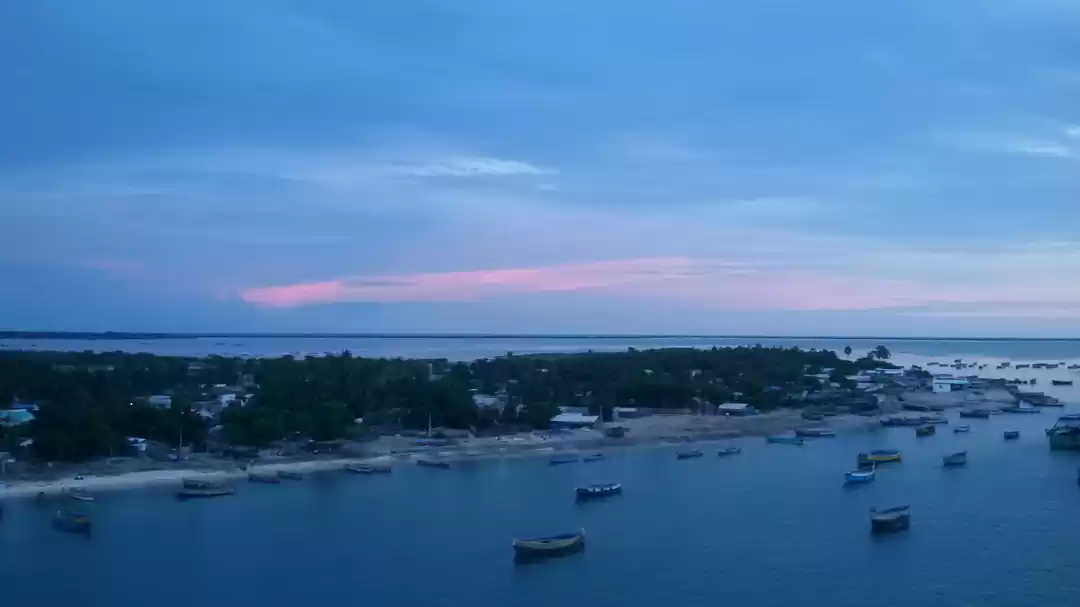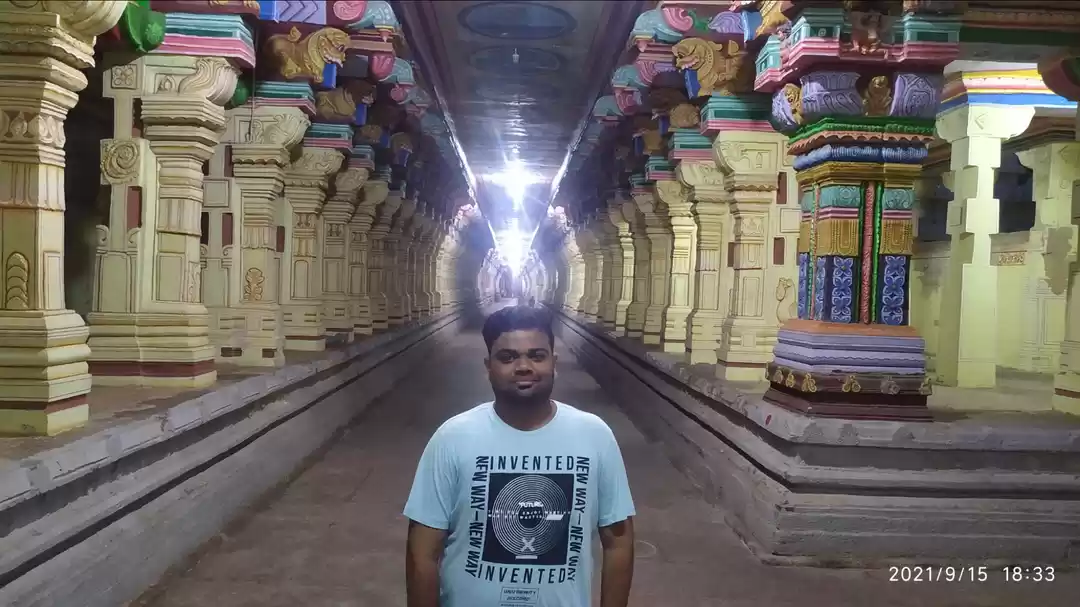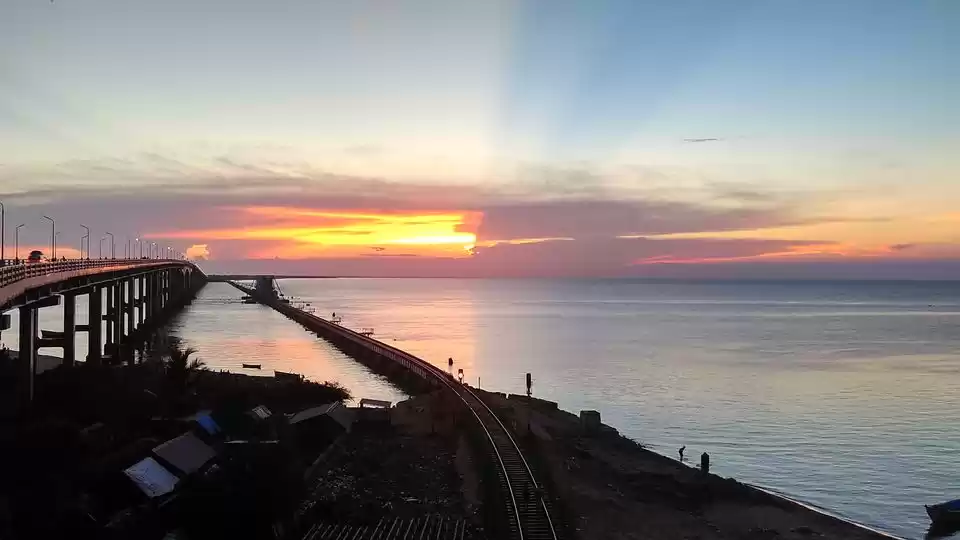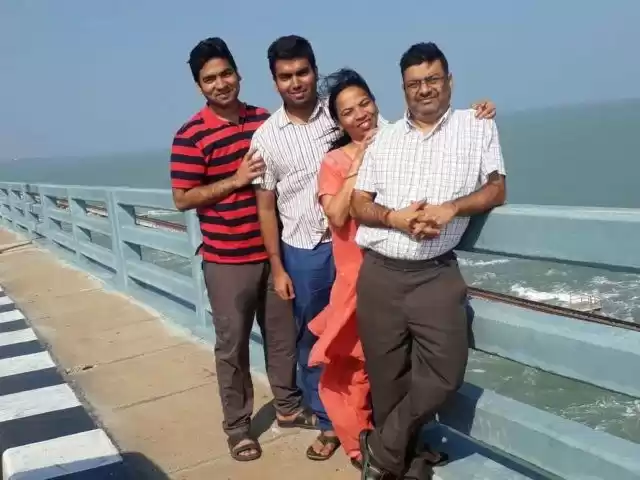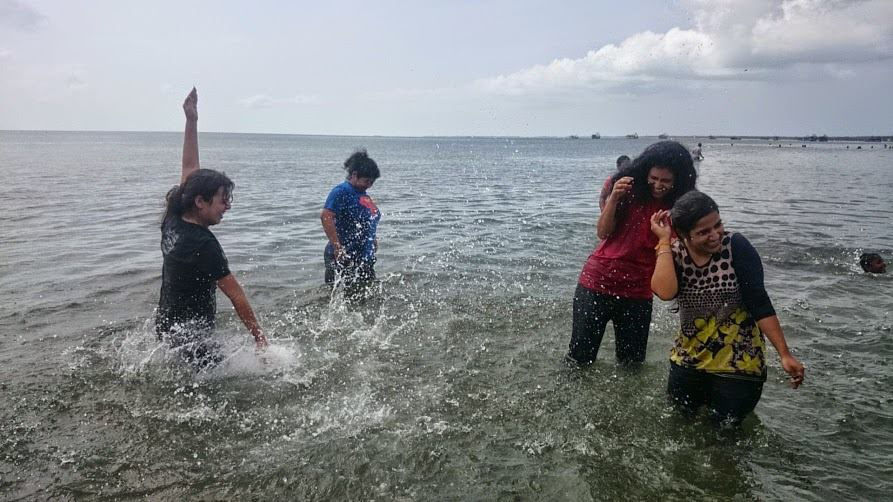
This September I took a trip to the holy land of Tamil Nadu where dwells the reknown temple of Rameswaram. Even though the whole event was not planned and our trip to the temple had been a rapid choice; we ended up drenching our mind and body in the holy water. There's something queer about Indian temples; somewhat incredibly eccentric feeling that leaves you intrigued all the time. I am more mesmerized by the history of the temple, whenever I visit one, more than its holiness. It comes to me as an instant shot from the bygone.
Pamban Island, which is separated from the mainland India entail the route to this place. There's something utterly unconventional about this, even though it appears all the same to almost everyone. Pamban Bridge is a cantilever bridge that ties the island with the mainland. It was India's first and one of its kind of Sea Bridge which was constructed in 1914. The phenomenal activity of this bridge is the "raise through" which allow ships to pass. Oblivious to its wake of 100 th anniversary this year; we visited Rameswaram using the same bridge.
Rameswaram abuts the history of Rama with the present world. It is said that this was the place (temple) where he planked route to Sri Lanka to rescue Sita, later expanded in a huge majestic form by Pandya's in the 12 th century. This temple is a memoir to the pillars of light, building a strong bond with the eminence of lord Shiva. Rama who was considered to be seventh incarnation of lord Vishnu sought forgiveness for his indignant deed of killing a Brahmin (Ravana) during his war with him, the abduction of Sita, Rama's wife.
He sent Hanuman, the leader of his militia to bring a lingam (statuette's dust) from Himalaya, the biggest of all, so that he can offer his service to lord Shiva, however the delay in Hanuman's arrival compelled Sita, to fabricate one lingam with the sand available on the beach, the actual lingam which is present in the temple today.
Between 1897 and 1904, the ALAR family of Devakottai completed the imposing eastern tower of nine tiers 126 feet in height from Thiruppani funds. Between 1907 and 1925 they renovated the Sanctum Sanctorum and the prakaram(innermost corridor) by replacing the limestones by black granite with adequate provision for light and ventilationOuter Wing - East_West - 690 feet
North-South - 435 feet
Inner-wing - East_West - 649 feet
North-South - 395 feet
Total number of pillars - 1212
Height of Corridor - 22 feet 7 ½ inch
What did we do?
- We took a bus from Bangalore to Rameswaram on 12th September (Friday) and reached there next day early in the morning at around 10 A.M.
- Right there at the bus stand, we hired an auto that took us to Rameswaram.
- He charged 10 RS per person.
- We lay our bags on the beach and ran towards the sea.
- We entered the temple along with a temple priest who helped us with the services of deity.
- He then gave us a sporadic view about the history of the temple, relevance of the kunds, its construction, formation etc.
- We kept our luggage outside the temple, at a shop which charged us 50rs per locker.
- There were many tarot card readers outside the temple's premises where none of us tried digging into our future, isn't it better that way?
What's more?
- This temple is part of 12 Jyotirlinga and the southernmost in all of them.
- There are 64 holy water bodies, also known as Tirthas in and around the vicinity of the temple.
- There are 22 kunds inside the temple's premises where you are supposed to take bath. (Not literally, since the water level has gown down, they pour water from buckets on your head)
- It is also part of the four Hindu divine site, thus embarks upon immense relevance for all the Hindus.
- The last major restoration which gifted its current shape happened in the 17th century; however it has been continually on some form of restoration every now and then. Parts of temple are still untouched (in the sense of no major change in their physical appearance) and belong to the early 11th / 12th century.
- Jaffna kingdom (1215-1624 CE) made significant and most remarkable contribution in its structure.
- Temple deities are taken to procession on the day of Maha Shivaratri.








